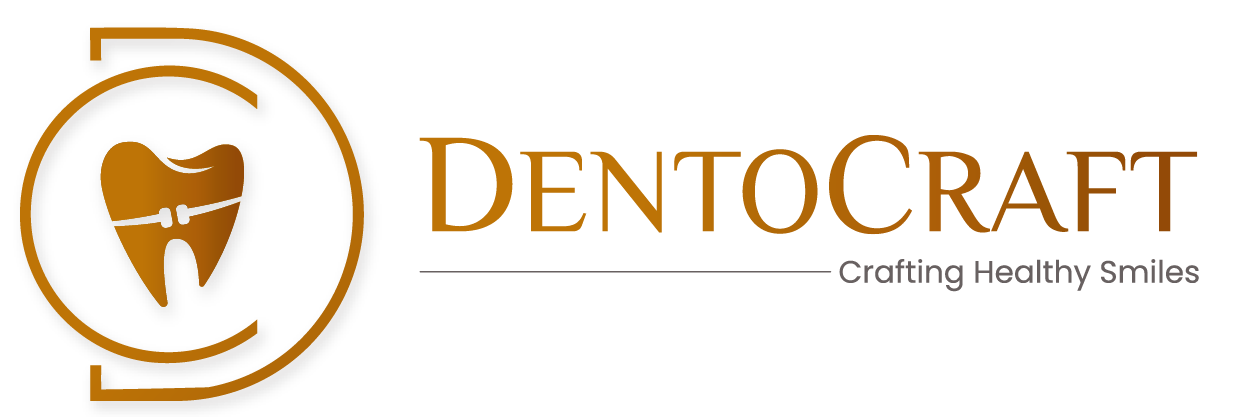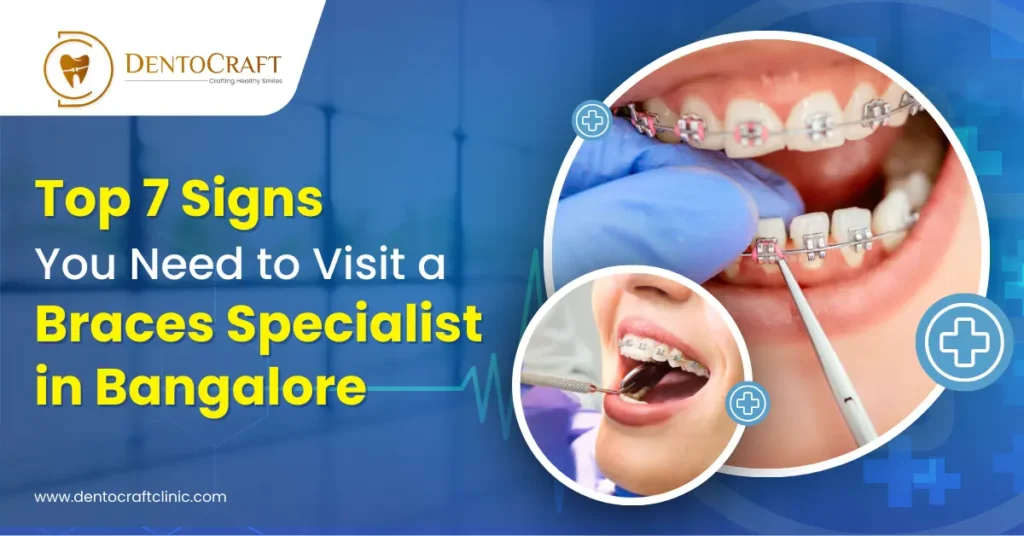
Top 7 Signs You Need to Visit a Braces Specialist in Bangalore
Are you someone who is conscious about your smile and covers your mouth when you laugh? Or are you holding back from eating your favourite food because the bite of it gives you uncomfortable pain? Or worse, you are silently struggling with jaw tension. Then you might have to book an appointment with the best orthodontist in Bangalore and take an expert suggestion before you suffer from severe pain.
When it comes to good oral health, keeping your teeth clean and cavity-free is just as important as how they line up and fit together in your mouth. Healthy, well-aligned teeth not only shape your face but also ensure good overall dental health and jaw functionality. When things aren’t in the right way and you recognise any sort of teeth alignment issue, address that and save yourself from bigger problems down the road.
To help you recognise, here are 7 not-so-subtle signs you might benefit from orthodontic treatment.
Crooked and crowded teeth
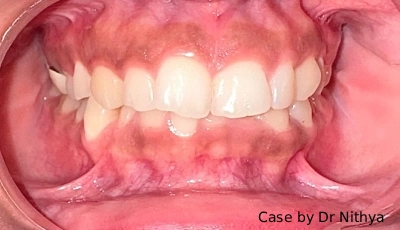
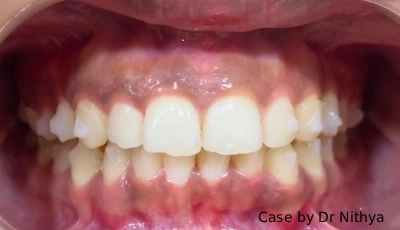
We are serving as one of the best brace specialists in Bangalore. Ever since, one of the most obvious and common reasons people visit us for orthodontic treatment is for overcrowded teeth, where there isn’t enough space in their mouth for all the teeth to align properly.
When the teeth are not lining up the way they are supposed to be, they lead to overlapping, twisted, or rotated teeth.
This overlapping or misaligned tooth is not just a cosmetic concern, it seriously impacts the overall oral health. With crooked and crowded teeth, brushing and flossing can be quite challenging, which allows plaque and bacteria to build up.
This results in increased risk of cavities, bad breath and gum disease. Also, over time, the pressure from the misaligned teeth causes them to wear unevenly.
But the bright side is it’s totally fixable. Orthodontic treatment, such as braces or clear aligners, gently shifts your teeth into an optimal position and improves your face structure, your smile and also your oral health.
Bite problems and Jaw alignment issues.
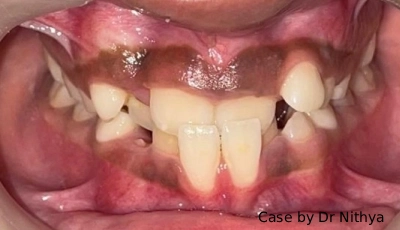
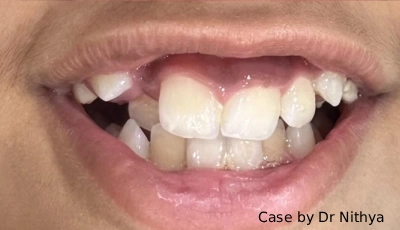
Some problems may go unnoticed but are silently ruining your teeth’s health. Fortunately, they do show signs for you to recognise. One such condition is Malocclusion. But what is Malocclusion? Do you really need braces for Malocclusion? Let’s understand this in simple, everyday language.
When you bite or chew and your upper and lower teeth don’t come together, you likely have Malocclusion.
This includes,
Overbite – when the upper teeth stick out too far from the lower teeth.
Underbite – when the lower teeth stick out too far.
Crossbite – when teeth don’t align properly side by side.
Overbite – when the upper teeth stick out too far from the lower teeth.
Underbite – when the lower teeth stick out too far.
Crossbite – when teeth don’t align properly side by side.
This bite misalignment can lead to jaw pain, difficulty in chewing, premature tooth wearing, and sometimes headaches and speech difficulty.
But worry not, schedule a consultation with the best orthodontist in Bangalore, and they will closely examine the issue and suggest whether your teeth need braces.
Noticeable gap between teeth.
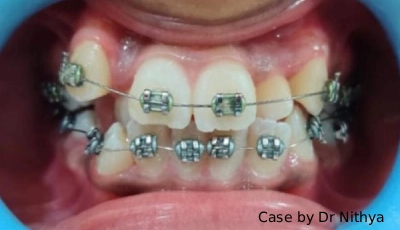
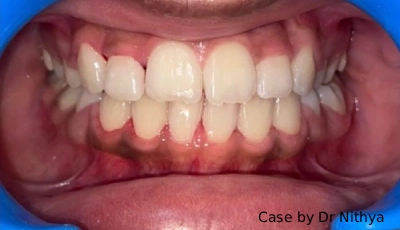
Do you avoid clicking photos because you are conscious that the large gap between your two front teeth may get highlighted? Or is your tongue always on duty of trying to remove that food particle stuck between your teeth? Then this might be a sign you need braces to bring a balanced smile to your face.
These gaps may result from missing teeth, undersized teeth, or jaw size discrepancies. While small gaps can be considered for aesthetic concerns, a larger gap between your teeth is a clear warning sign. They cause functional problems by holding the food particles between them, potentially leading to tooth decay and gum irritation.
By getting orthodontic treatment such as braces or clear aligners, you can smile confidently while also improving your bite functionality.
Jaw pain and a clicking sound
Do you often hear a clicking sound upon opening and closing your mouth? Or do you find it hard to pronounce some words? Then this might be because of the misalignment among your teeth that disturbs the tongue movement.
While many people brush off this sign as a minor inconvenience, if unaddressed, this teeth alignment issue can lead to long-term joint dysfunction.
This is when orthodontic treatment makes all the difference. Braces help to create a proper bite alignment and hence reduce the discomfort. At Dentocart, we have treated many patients with these symptoms, and most of them got relieved from the uncomfortable clicking sound.
Early or late loss of baby teeth
Losing baby teeth too early or too late both seems harmless, but it is a significant sign of potential orthodontic treatment. When a baby teeth fall out too soon, adjacent teeth may shift to the nearby space and block the permanent teeth from coming out properly. On the other hand, when the baby tooth falls out too late, it blocks the eruption of the adult tooth.
Either scenario can result in crooked or crowded teeth. Upon keen monitoring of your baby’s tooth eruption pattern, you may recognise the early sign and fix the issue with minimal treatment or with partial braces and prevent more complex procedures down the road.
Facial asyymetry
Do you often stand in front of the mirror and find a noticeable difference between your right and left profiles of your face? Like when you smile, it looks slanted on one side. This might be a sign of an underlying orthodontic issue of Jaw Misalignment or uneven tooth position.
This facial asymmetry happens because of abnormal dental development or when the teeth and jaw are not aligned properly.
But the solution for this is just a call away from scheduling a consultation with the best orthodontist in Bangalore. Braces or other recommended orthodontic treatment help improve the facial balance and thus appearance by gradually repositioning the teeth and jaw into the right place.
Chewing feels difficult or painful
Chewing is an effortless task. But when eating soft food becomes a chore, it’s a sign to visit an orthodontist nearby.
When your teeth are not aligned properly, they don’t work together as a team and force some teeth or muscles to overwork.
When you visit an orthodontist, they suggest what works best for you, and accordingly, you can restore proper bite alignment.
Bottom Line
When something is off in your body, it sends a signal, it shows a sign. The earlier you catch these signs, the more effective the treatment tends to be.
Modern orthodontic treatment has become increasingly popular, offering a range of options, from traditional metal braces to clear aligners, ceramic braces, and lingual braces. It’s always a wise call to invest in your smile and good oral health.
FREQUENTLY ASKED QUESTIONS
-
How to know if I need braces?
There are some clear signs to know if you really need braces, such as crowded and crooked teeth, a visible gap between your teeth, bite issues and prolonged jaw pain. However, an orthodontic consultation can provide a clear evaluation of your oral health condition and suggest what works best for you. -
When to see an orthodontist?
It is recommended to visit an orthodontist regularly for a routine checkup. But you have to visit immediately when you encounter some signs, such as difficulty in chewing, frequent jaw or tooth pain, or an uneven bite. -
What are the common symptoms of an orthodontic problem?
Jumbled teeth, irregular teeth spacing, jaw clicking, speech issues, trouble cleaning the teeth, and facial asymmetry are some of the common symptoms that indicate the need for an orthodontic clinic visit. -
How long does orthodontic treatment typically take?
The duration of the treatment purely depends on the treatment method and the complexity of the problem. However, roughly it would take 12–36 months to show the expected result. -
When do you need orthodontic treatment for children?
Children show early signs of need for braces. If they have difficulty in chewing, continue thumb sucking beyond 5 years, or baby teeth are not falling out on time, you need to take them for an orthodontic appointment. -
What are the signs I need braces?
Visible alignment issues or invisible tooth or jaw pain majorly indicate the need for braces. Other symptoms include difficulty in chewing, trouble cleaning the teeth, facial asymmetry and bite problems.
Your mouth deserves the best care! Begin your journey to better oral health today.
Dr. Nithya S (Author)
Orthodontist and Dentofacial Orthopaedician
